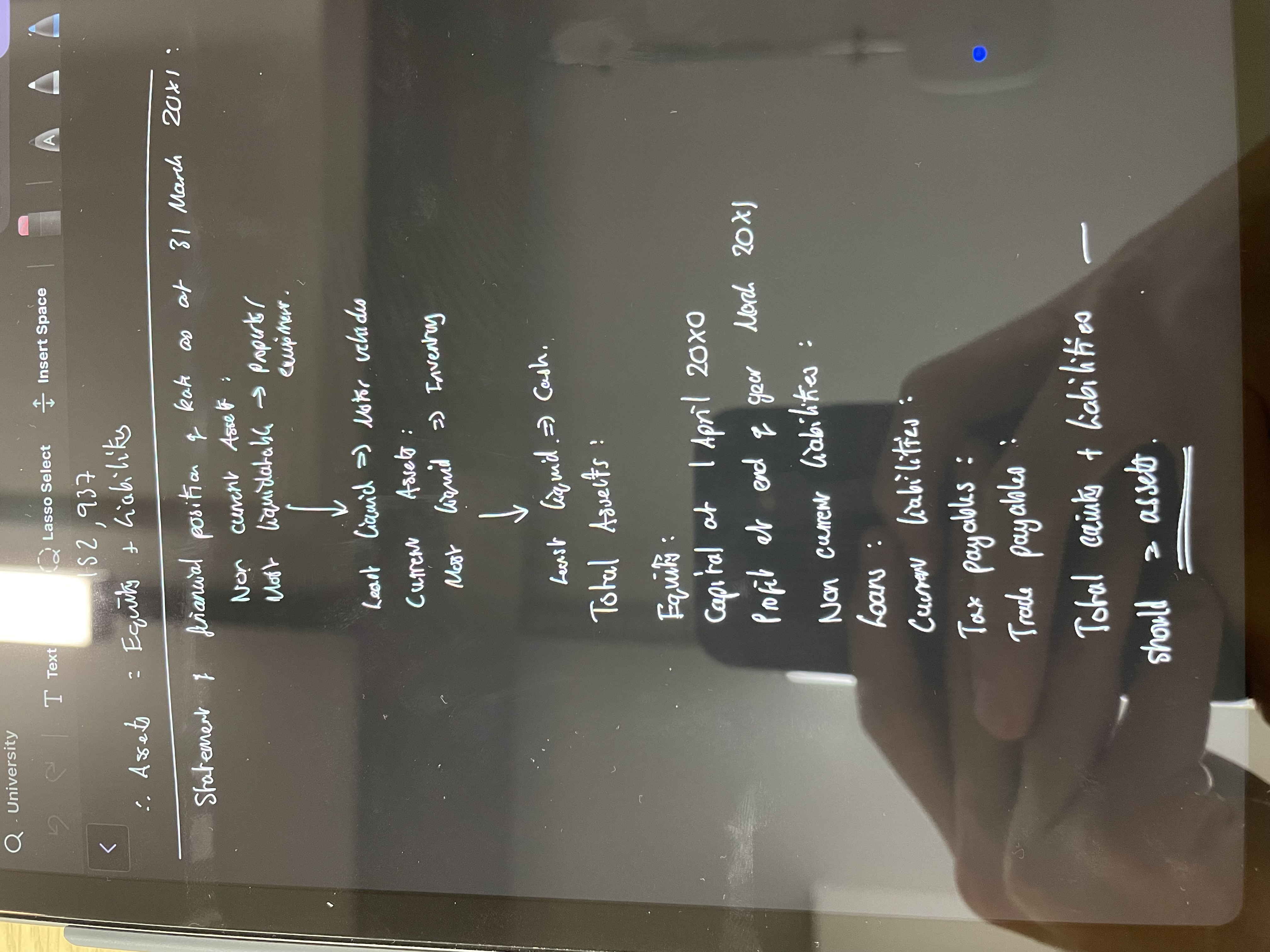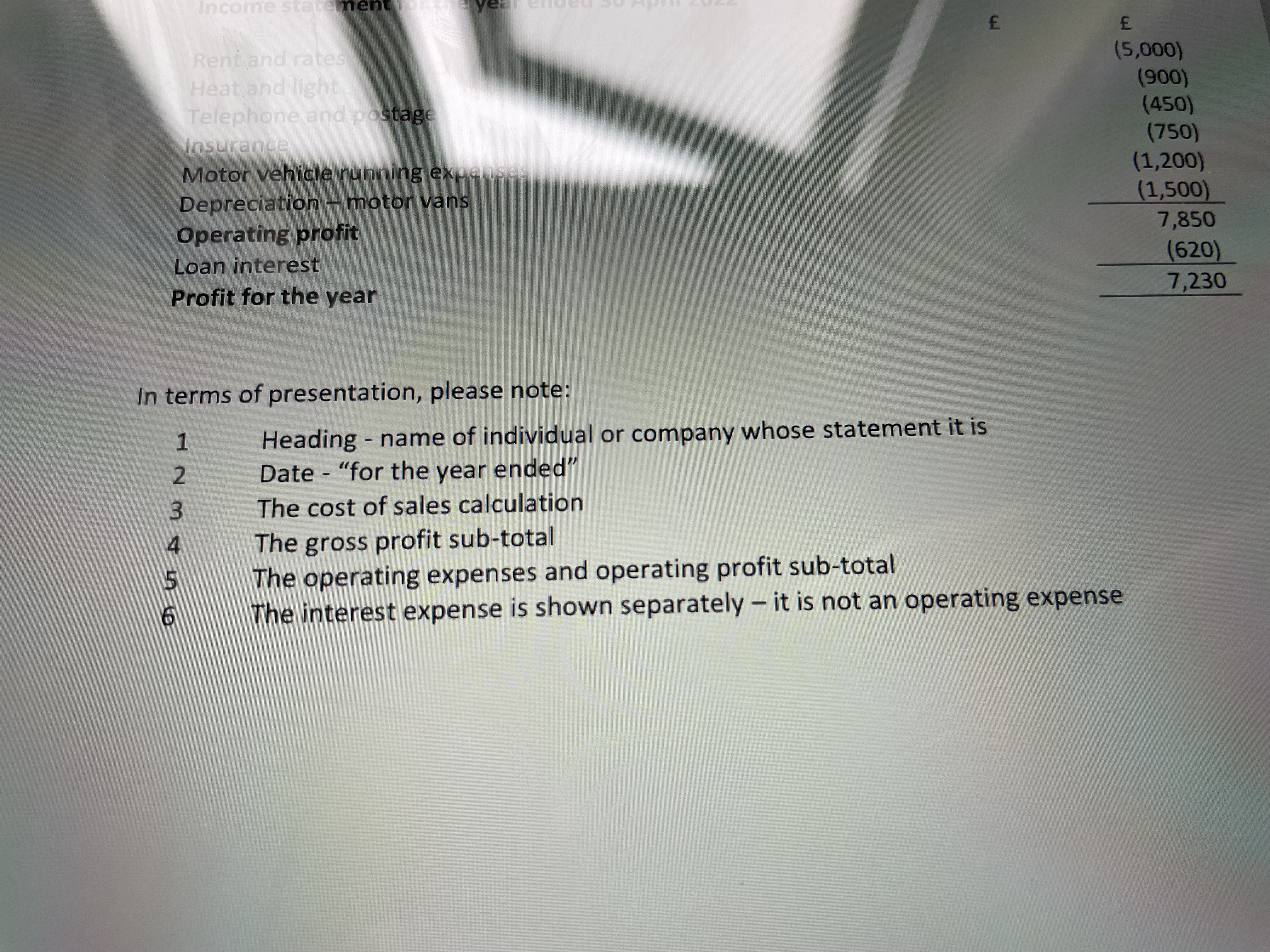Financial Accounting
1/39
There's no tags or description
Looks like no tags are added yet.
Name | Mastery | Learn | Test | Matching | Spaced |
|---|
No study sessions yet.
40 Terms
Accounting definition
The process of identifying, measuring and communicating information to permit informed judgements and decisions by users of the information
Financial accounting
Information for the users on the outside of a business. Regulated by company law, is always about the past, not very specific information. Balance sheet of big PLCs
Management accounting
Used for people inside the company. Concerns the future and helps make decisions. Highly technical and specific info, no laws to regulate and helps control resources
Types of organisation
Sole trader - still must file accounts but less regulated
Partnerships- usually law firms and if accounts are reported wrong the liability stands with all partners
Not for profit sector - Charities, Council, Government
Companies - Private Limited Companies (LTD) and Public Limited Companies (PLC)
Limited when regarding business
Means they’re only limited to what their shares are worth in the business when they were purchased
3 financial statements
Statement of financial position (Balance sheet)
Statement of Income (Profit or Loss)
Statement of Cash Flow
Who would use accounting info?
Competitors, Regulators, Shareholders, Employees, Government, Investors, Bank etc
Qualities of Financial Statements
Relevant and Reliable
Comparability, Timelines, Verifiability, Understandability
Statement of Financial Position
Assets= Equity + Liabilities

Assets
Non-Current- Generate income in the long term or must by sold over a long period of time (property)
Current - Cash, can be sold within the next 12 months or near cash
Equity
The amount the owner has invested and is able to claim from the business
Liabilities
Claims from organisations or businesses from outside the business that they cannot avoid.
Current - Settled within 12 months
Non Current - Long term loans
4 Accounting conventions
Business Entity Convention
Prudence
Going concern
Matching
Business entity convention
The owner and the business are treated as separate and distinct
Prudence
Financial statements should err on the side of caution. Should not be approximated without knowing true figures
Going concern
The business will continue operation for the foreseeable future without reasonable doubt of otherwise
Matching
The expenses should match the revenues that they helped generate in the same accounting period as the revenues are released
The Income statement
Measures profit or losses over an accounting period
Revenue
Measure of the inflow of assets or reduction in liabilities which arise from a result of trading activities
Usual source of revenue comes from the sales of goods by retail or manufacturing businesses or the provision of a service in the service industry
Criteria for Revenue
Amount can be measured reliably
Probable that the economic benefits will be received
Ownership and control of the items should pass to the buyer (when the goods are being sold)
Expenses
Measure of the outflow of asset (or the increase of liabilities) that is incurred as a result of generating revenues
This may include salaries, wages, rent etc
The accounting equations
Assets= Equity + Liabilities
This can be extended to
Assets = Equity at start of period + profit at end of period + Liabilities
Profit = Revenue - Expenses
Assets + Expenses + Drawings= Equity + Liabilities + Revenue
On left is debits, on right is credits
Debits and Credits
DEAD CLIC
Debits are expenses, assets and drawings
Credits are liabilities, income, capital
Setup of the Income Statement

Th trial balance
The debits and the credits listed, they must equal one another to be valid
Accruals
A business has not paid all of its expenses for an accounting period.
increase expenses and create a current liability
Prepayments
A business has paid amounts towards purchases in the future past the current accounting period
Decrease expenses and create current assets
Closing inventory
The amount you have left in inventory at the end of the accounting year.
This follows over to the opening inventory the next year
This should always be the lower of two options: what you paid for it and what you can sell it for
Cost of sales adjustment
Cost of sales = open inventory + purchases - closing inventory
Methods of depreciation
Straight line depreciation
Reducing balance depreciation
Unit of production
Straight line depreciation
Simple interest, reducing by the same amount each year
Depreciation is taken as an expense in the income statement
Net book value
Historic cost- accumulated depreciation
This is labelled as an asset in the SFP
Reducing balance depreciation
Compound interest
Cost - accumulated depreciation x n%
How is depreciation recorded
Income statement has a depreciation expense
SFP has accumulated depreciation under non current assets next to the historic cost of the asset
Calculating Trade receivables
Take original amount- irrecoverable debt like ones that will never be paid then take the percentage off of that
5 different adjustments
Accruals
Prepayments
Cost of sales
Depreciation
Bad debts
Scrap/ Residual value
The amount of money you could get from selling the item at the end of its useful life (must be estimated but is usually 0)
Amortisation
Depreciation for intangible assets
Choosing a depreciation method
Accouting regulations don’t tell you what one to use
Difficult to measure how much an asset actually wears out during a year
Unpredictable factors effect wear and tear: how careful operation is, maintenance, intensity and variety of use
Choose and apply consistently and disclose what method you use